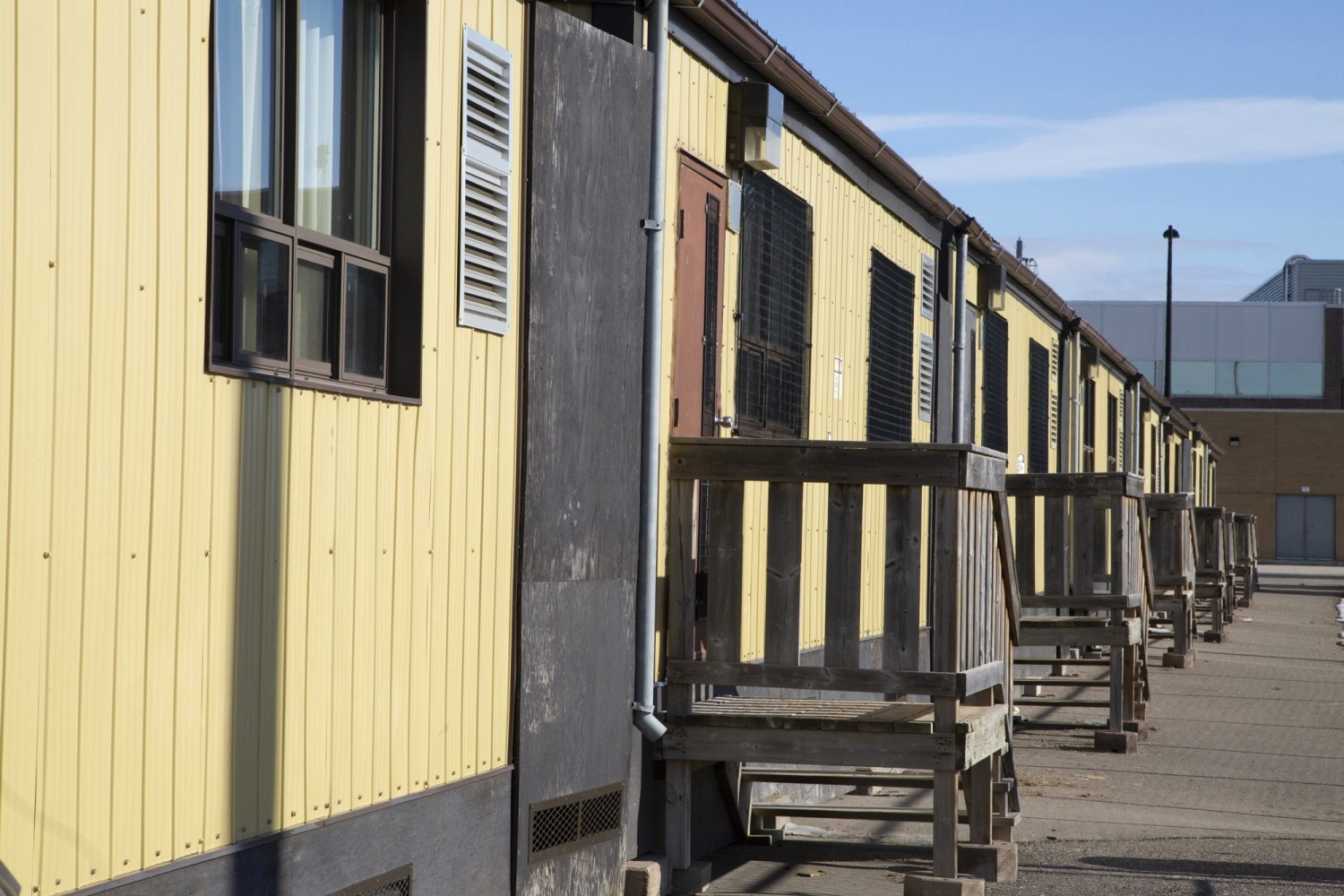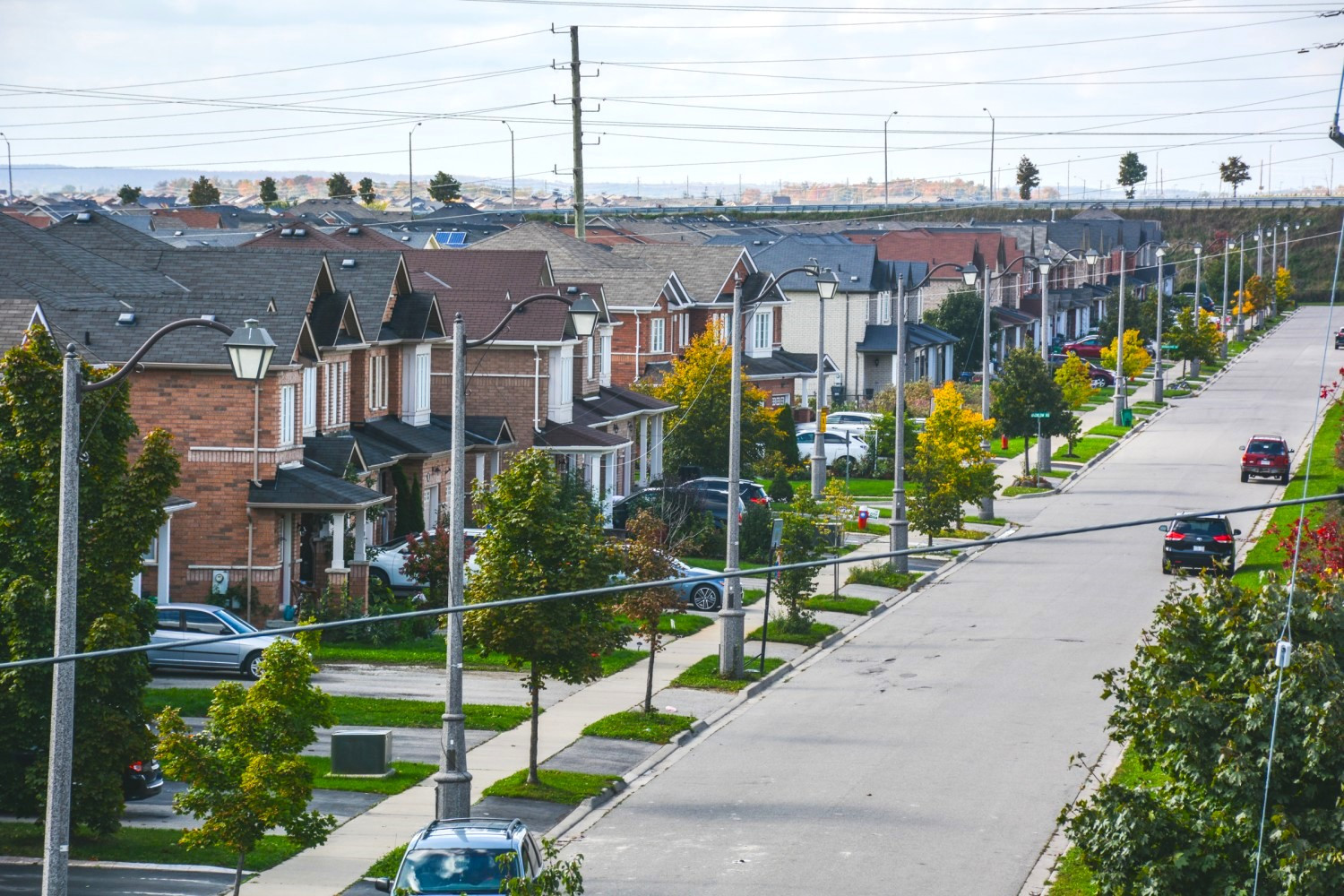
Residents warn Council that Brampton neighbourhoods lack infrastructure to support much needed housing
The PC government has asked twenty-one municipalities across Ontario to make a pledge to accelerate housing supply in order to meet its target of building 1.5 million homes by 2031, as part of its More Homes Built Faster Act. For the City of Brampton, that means 113,000 houses must be built in less than eight years.
As the City moves forward with various housing development proposals, Brampton's population, which is the 9th largest in Canada, 4th largest in Ontario and 3rd largest in the GTA, according to City data, has already been experiencing a lack of services and infrastructure to support current residents. Schools are filled and forced to use portables and the hallway healthcare crisis continues to put locals in need of a hospital bed at risk.

(Joel Wittnebel/The Pointer)
As part of an ongoing series, The Pointer will be running regular stories on the race to build housing in Brampton and Mississauga while looking at how these new residents will be supported by crucial infrastructure such as hospitals and schools, paramedics, public health services, municipal community centres, libraries, roads, municipal water systems and all the rest of the day-to-day needs people deserve.
During the September 11 Planning and Development Committee meeting at City Hall, City staff presented two reports regarding residential building development proposals. One was for a 12-storey mid-rise residential building containing 265 dwelling units, and the other was for two mixed-use high-rise buildings containing 572 dwelling units. The former would be located along Queen Street West between Creditview Road and James Potter Road. The report for this development, presented by Edwin Li, Planner, Development Services on Monday, sought to amend the Official Plan and Zoning By-law to facilitate the development.
The other report on the two mixed-use high-rises was presented by Emma De Melo, Planner, Development Services, and sought to amend the Official Plan and Zoning By-law to facilitate the phased development, which would be located along Bramalea Road between East Drive and Dearbourne Boulevard. The first phase of this project would be the development of a 28-storey mixed-use building with 330 units, and the second a development of a 22-storey mixed-use building with 242 units.
The additional units these developments would bring are badly needed in Brampton, where demand for housing has outpaced availability. But the coming population will need infrastructure and services such as schools, hospital beds, community centres, policing, roads, water systems, public health, parks, libraries, community centres and many other features future residents will expect. Current residents are already struggling with a transit system that has not kept pace with growth, a hallway healthcare crisis that continues to get national headlines, overcrowded schools and a long list of other growth-related pressures.
Brampton only has one hospital despite having a population of close to 700,000 residents. It’s the most dire of the city’s myriad infrastructure issues, since its hyper-growth began in the ‘70s. In 1971, before the beginning of the boom, only 41,000 people lived in Brampton.
Rendering of the proposed development at 69 Bramalea Road.
(City of Brampton)
Residents presented their delegations to Council, raising concerns about the city’s capacity to to support the population that will come with the two new developments. Impacts of hundreds of new residential units cannot be handled by existing infrastructure and services, already stretched to their limit, residents warned.
One who highlighted the 69 Bramalea Road project said there is already traffic congestion, crowded stores and a lack of facilities to support all the additional people the development will bring into the area. While residents were not opposed to growth itself, they questioned if the approval of large projects is sustainable considering the lack of adequate infrastructure. Brampton resident Theo Grootenboer delegated saying the Bramalea Road project will not be supported by adequate infrastructure to accommodate all the extra vehicles, and with legislation introduced by the PCs that reduces fees paid by developers to construct such features to support growth, it remains unclear how all the surrounding infrastructure will be funded.
Brampton residents presented delegations regarding the development on Queen Street West with similar concerns about infrastructure, saying facilities are already crowded and roads experience congestion with the current population level. They stressed they are not trying to be NIMBYs, they just want to know how schools, roads, hospitals and all the other required community features will be paid for in time to support new residents.
Concerns with potential environment issues, such as potential risk of flooding, and a lack of alternative transportation such as buses were also brought up by delegates during the meeting.
These concerns reflect ongoing issues that Brampton has faced, with many schools being overcrowded and often relying on portables. Buses are also filled past capacity along certain routes in the city, and stormwater systems are already struggling in the face of increased demand caused by climate change. The Churchville flooding was a recent reminder to Brampton residents of the dangers associated with developing in a floodplain that lacks the proper mitigation infrastructure, something the PC legislation has made easier, putting residents and their neighbourhoods at greater environmental risk.
As the City strives to meet housing goals imposed by the PC government, residents asked how such a large number (113,000 new homes in less than eight years) can be supported, when they are already struggling with a lack of services in one of the country’s fastest growing municipalities.
Email: [email protected]
At a time when vital public information is needed by everyone, The Pointer has taken down our paywall on all stories to ensure every resident of Brampton and Mississauga has access to the facts. For those who are able, we encourage you to consider a subscription. This will help us report on important public interest issues the community needs to know about now more than ever. You can register for a 30-day free trial HERE. Thereafter, The Pointer will charge $10 a month and you can cancel any time right on the website. Thank you
Submit a correction about this story


